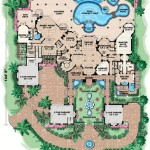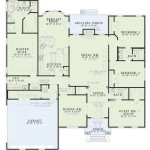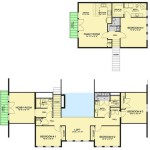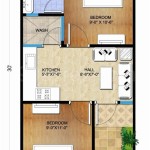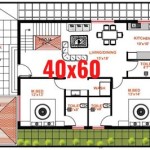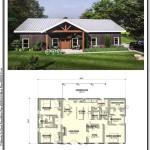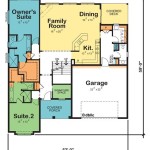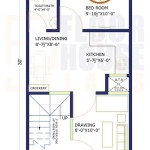Floor Plans With Secret Passageways: A Hidden Dimension of Architectural Design
The concept of secret passageways within residential floor plans evokes images of historical castles, suspenseful novels, and clandestine operations. While seemingly relegated to the realm of fiction, secret passageways are making a resurgence, not just in grand estates, but also in contemporary homes. This article will explore the diverse applications, design considerations, and practical benefits of incorporating hidden routes and rooms into floor plans, demonstrating how this intriguing feature can blend security, functionality, and a touch of the extraordinary into modern living spaces.
The allure of secret passageways extends beyond mere novelty. They offer a unique blend of practical advantages, including enhanced security, discrete storage, and even an element of entertainment. Designing and integrating these hidden spaces, however, requires careful planning and meticulous execution. Architects and homeowners must consider structural integrity, accessibility, and the overall aesthetic impact of the chosen design. The successful integration of secret passageways can transform a conventional floor plan into a dynamic and personalized environment.
Enhanced Security and Privacy
One of the primary motivations for incorporating secret passageways into a floor plan is amplified security. In residences where security is paramount, hidden rooms can function as safe rooms or panic rooms, providing a secure refuge during emergencies. These rooms are typically reinforced and equipped with communication devices, emergency supplies, and independent power sources. Access to these rooms is concealed through secret doors or passages, making them difficult for intruders to locate.
Beyond emergency situations, secret passageways can also enhance privacy. They can provide discreet access to certain areas of the house, allowing residents to move between rooms without being seen. This can be particularly useful in homes with multiple occupants or where privacy is a significant concern. For example, a hidden passage might connect a master bedroom to a home office, allowing the homeowner to work undisturbed without passing through common areas.
The design of these security-focused passageways requires careful consideration. The entrance to the passage must be effectively concealed, and the passage itself should be constructed using durable materials. The locking mechanisms and security features within the hidden room must be robust and difficult to compromise. Furthermore, it is crucial to ensure that the passage does not inadvertently compromise the structural integrity of the building.
Creative Storage and Functional Design
Beyond security, secret passageways and rooms offer unique storage solutions, particularly in homes where space is at a premium. Hidden storage can be integrated seamlessly into the floor plan, maximizing usable space without sacrificing aesthetics. For example, a bookcase that pivots to reveal a pantry, or a section of wall that slides away to expose a wine cellar, can be both functional and visually appealing.
These hidden storage areas can be tailored to specific needs, from storing valuables and documents to concealing unsightly utilities. By concealing storage behind hidden doors, the overall appearance of the home remains uncluttered and sophisticated. This approach can be particularly beneficial in minimalist designs, where clean lines and a lack of visible clutter are essential.
The design of functional secret passageways requires a balance between practicality and aesthetics. The hidden doors must be easy to operate and blend seamlessly with the surrounding environment. The storage areas themselves must be accessible and well-organized, ensuring that they are practical for everyday use. The choice of materials and finishes should complement the overall design of the home, creating a cohesive and visually appealing space.
Adding a Unique Architectural Feature
The incorporation of secret passageways can transform a conventional residence into a unique architectural statement. They add an element of mystery and intrigue, creating a sense of discovery and adventure within the home. This can be particularly appealing to homeowners who appreciate unconventional design and desire a space that reflects their individual personality.
The design possibilities are virtually limitless. Secret doors can be disguised as bookshelves, mirrors, fireplaces, or even entire sections of wall. Passageways can lead to hidden rooms, libraries, or even outdoor spaces, creating a network of interconnected spaces that are both functional and engaging. The integration of these features can transform a simple floor plan into a dynamic and interactive environment.
The success of this approach hinges on the careful integration of secret passageways into the overall design of the home. The hidden doors and passages must be seamlessly incorporated into the architecture, so that they appear to be an integral part of the structure. The choice of materials, finishes, and hardware must be carefully considered to ensure that they complement the overall aesthetic of the home. The ultimate goal is to create a space that is both functional and visually stunning, reflecting the homeowner's unique style and personality. Furthermore, consideration must be given to building codes and regulations to ensure compliance and safety.
The planning stage is crucial. Architects need to analyze existing structural limitations and integrate hidden passages accordingly. This often involves working with structural engineers to ensure load-bearing walls and other critical elements are not compromised. For new construction, the planning can be more fluid, but still requires precision to avoid costly alterations later.
The choice of materials plays a significant role in both the aesthetics and functionality of secret passages. Solid wood, engineered wood, and even metal framing can be used, depending on the desired level of concealment, durability, and load-bearing capacity. The finishes must also blend seamlessly with the surrounding environment, whether it's paint, wallpaper, or custom textures.
Hardware is another critical consideration. Hinges, latches, and locking mechanisms must be robust, reliable, and discreet. Hidden hinges that are concealed within the doorframe are often used to maintain a seamless appearance. Magnetic latches or pressure-activated mechanisms can provide a soft-close function and further enhance the illusion of a solid wall.
Lighting within secret passages should be carefully planned to ensure safety and visibility. Recessed lighting, LED strip lights, and even fiber optic cables can be used to illuminate the passages without compromising their hidden nature. Emergency lighting should also be considered, particularly in passages that lead to safe rooms or escape routes.
Acoustics are an important aspect to consider, especially if the secret passage is intended to provide privacy or security. Soundproofing materials can be incorporated into the walls, floors, and doors of the passage to minimize the transmission of sound. This can be particularly helpful in homes with multiple occupants or where noise is a concern.
Ventilation is often overlooked, but it is crucial for ensuring air quality and preventing mold growth within hidden passages. Ventilation systems can be integrated into the design to provide a continuous flow of fresh air. This is particularly important in passages that lead to enclosed spaces, such as safe rooms or wine cellars.
Accessibility is a key consideration, especially for homeowners with mobility issues. Secret passages should be designed to be easily accessible, even for those who use wheelchairs or other mobility aids. This may involve incorporating ramps, wider doorways, and automatic door openers.
Maintenance is another important aspect to consider. Secret passages should be designed for easy maintenance and repair. Access panels should be incorporated into the walls and floors to allow for easy access to plumbing, electrical wiring, and other utilities. The materials used in the construction of the passage should be durable and easy to clean.
The cost of incorporating secret passageways into a floor plan can vary widely, depending on the complexity of the design, the choice of materials, and the expertise of the contractor. Simple hidden doors can be relatively inexpensive, while elaborate passages with multiple rooms and security features can be significantly more costly. It is important to obtain multiple quotes from qualified contractors and to carefully review the scope of work before proceeding.
Incorporating a secret passageway into a floor plan is not a decision to be taken lightly. It requires careful planning, meticulous execution, and a significant investment of time and resources. However, the rewards can be substantial, including enhanced security, increased privacy, unique storage solutions, and a one-of-a-kind architectural feature. For homeowners who appreciate the extraordinary and desire a space that reflects their individual personality, secret passageways offer a hidden dimension of architectural design that is both intriguing and functional.

House Plans With Secret Rooms

House Plans With Secret Rooms

Country Home Plan With Two Masters And A Secret Room 36025dk Architectural Designs House Plans

Storybook Inspiration With Secret Passage 17570lv Architectural Designs House Plans

8 Home Plans Secret Room Ideas Rooms House Design

Layout Changes Secret Rooms Little House On The Corner

15 Plans With Secret Rooms Ideas House Design

5 Bedroom Luxury Mediterranean Spanish House Plan 134 1329

House Plan 5 Bedrooms 2 Bathrooms 90108 Drummond Plans

Modern French Style House Plan With Upstairs Secret Room For The Kids 22641dr Architectural Designs Plans

